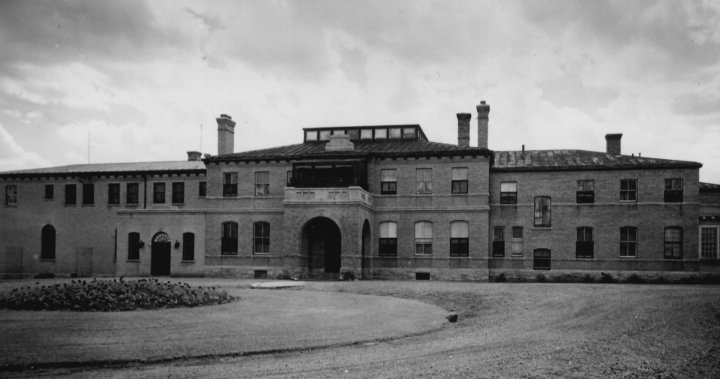As I step across the meticulously maintained grounds of Saskatchewan’s Government House, autumn leaves crunch beneath my feet. The sandstone facade of this 133-year-old building catches the late afternoon light, its windows reflecting back generations of prairie history that most visitors only glimpse on guided tours.
Few buildings in Saskatchewan embody the province’s transition from territorial outpost to provincial heartland quite like Government House. Built between 1889 and 1891, this stately structure on the western edge of Regina was once described by territorial newspaper The Leader as “the finest building between Winnipeg and Vancouver.”
“This building represents a time when Saskatchewan was finding its identity,” explains Carolyn Thompson, curator of Government House’s museum collections. “It was constructed when Regina was just a small settlement on the prairies, yet ambitious enough to house the Lieutenant-Governor in a style befitting British imperial standards.”
The house served as the official residence for the Lieutenant-Governors of the North-West Territories and later Saskatchewan until 1945. Walking through its restored Victorian parlour, I’m struck by how the meticulous recreation of period furnishings creates an almost time-travel experience.
The original structure was designed by architect Thomas Fuller, who also crafted the Parliament Buildings in Ottawa. Its sandstone exterior and distinctive rounded turret set it apart from most frontier architecture of the time. The cost—approximately $120,000 in 1891—represented an enormous investment in what was essentially still frontier territory.
After decades serving as Saskatchewan’s vice-regal residence, the building narrowly escaped demolition in the 1970s when public outcry and heritage advocates successfully campaigned for its preservation. Today, it functions as a museum, events venue, and working office for the Lieutenant-Governor.
“Many visitors are surprised to learn how close we came to losing this place,” says Robert Wheeler, a volunteer guide who has been sharing Government House’s stories for eleven years. “When they proposed tearing it down, people realized what an irreplaceable piece of our heritage it was.”
The building’s journey reflects Saskatchewan’s own evolution. During the devastating economic collapse of the 1930s Dust Bowl era, Government House became a symbol of both stability and excess. By 1945, amid post-war austerity, the provincial government converted it into a rehabilitation center for veterans, a role it served until 1984.
Inside, the Edwardian Conservatory stands as my favorite room—a sun-drenched space where exotic plants once thrived despite prairie winters. Today’s conservatory has been painstakingly reconstructed based on photographs and architectural records from 1901, when it was first added to the residence.
The Government House Heritage Property encompasses more than just the main building. The surrounding 8.5 acres include formal gardens, the Edwardian Garden, and the Provincial Capital Commission Nursery. These grounds once supplied much of the food for the household and official functions, with extensive vegetable gardens and even livestock pens.
“The self-sufficiency of Government House was remarkable,” Thompson notes. “Records show they produced everything from asparagus to pork right here on the property.”
Perhaps most compelling are the stories of those who lived and worked here beyond the Lieutenant-Governors themselves. Staff diaries and employment records reveal the daily lives of housekeepers, gardeners, and cooks who kept the residence functioning through world wars, economic depression, and political change.
One such story involves Sooyung, a Chinese cook who worked at Government House in the early 1900s. Despite the anti-Asian sentiment prevalent in that era, his culinary skills made him indispensable to the household. Personal letters discovered in the provincial archives suggest he maintained correspondence with several Lieutenant-Governors long after they left office.
The building’s basement holds another layer of history—evidence of the tunnels that once connected Government House to other significant buildings in Regina. Though most passages have been sealed for safety, they represent the literal underground network that facilitated governance in early Saskatchewan.
While Government House now welcomes around 60,000 visitors annually, many Saskatchewan residents have never explored this cornerstone of their heritage. The free admission policy implemented in 2016 has helped increase accessibility, particularly for school groups studying provincial history.
“What makes Government House special is how it connects us to both our British colonial past and our prairie pioneering spirit,” explains Dr. Michael Dawson, a history professor at the University of Saskatchewan. “It’s simultaneously grand and practical—much like the Saskatchewan character itself.”
In recent years, the Provincial Capital Commission has worked to incorporate Indigenous perspectives into the interpretation of Government House. New exhibits acknowledge that this landmark sits on Treaty 4 territory and feature artifacts and stories that predate European settlement.
As evening approaches and I prepare to leave, I notice a young family exploring the J.E.N. Wiebe Interpretive Centre. Their children peer into glass cases containing silver tea services and vintage photographs while their parents read about the political debates that shaped the province.
Government House stands as more than a preserved relic—it remains a living institution where Saskatchewan continues to celebrate achievements, welcome dignitaries, and connect with its past. In a province where history often feels measured in decades rather than centuries, this 133-year-old landmark provides a tangible link to our collective beginnings.






